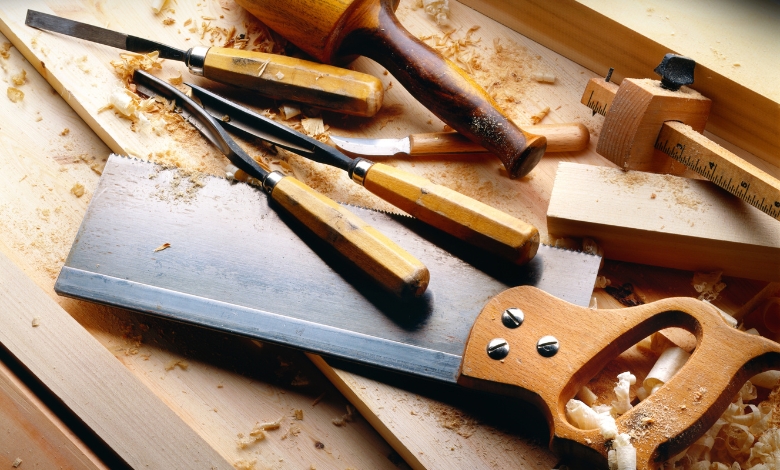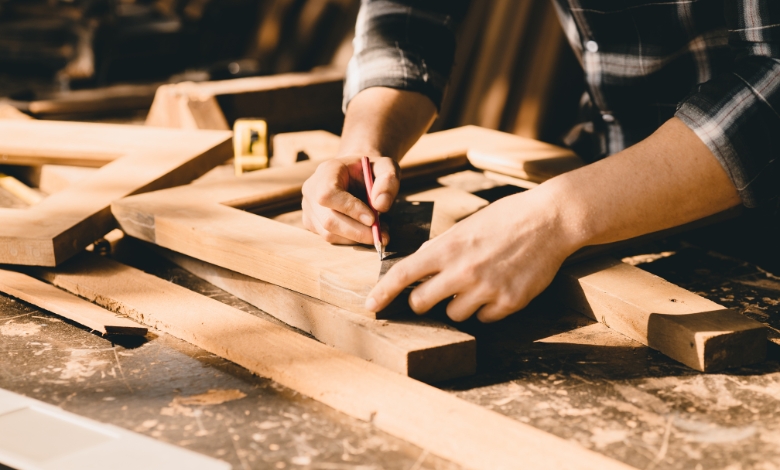Discover what’s it called when a carpenter peels wood and explore the craftsmanship behind this essential woodworking technique.
You know that sound you hear when you walk into a workshop, like metal scraping against wood?
If you’ve ever wondered what that means or what it’s called when a carpenter strips wood, you’re definitely not the only one.
I’ve spent lots of afternoons surrounded by sawdust and sunshine, and I can tell you that this simple action is actually where real wood craftsmanship begins.
Let’s dive in.
Article Breakdown
What’s the Name for Peeling Wood?

When it comes to carpentry, “planing” or “shaving” refers to the technique of removing thin layers of wood from a surface.
This is done with specialized tools that serve different purposes, like smoothing rough planks, ensuring uniform thickness, or carving intricate curves.
Whether you’re using a hand plane or an electric one, knowing how to shave wood well is crucial for any woodworker.
But what does it actually mean to plane wood?
What small details make a skilled carpenter stand out from a casual weekend DIYer?
Let’s take a closer look at the different wood shaving techniques and see how this craft isn’t just about building furniture; it’s also about the talent of the carpenter using the tools.
Planing vs. Shaving: The Tools That Shape Masterpieces
Let’s get hands-on for a moment.
Imagine running your palm across a wooden board, its surface rough, jagged, and full of imperfections.
The first tool that likely comes to mind for smoothing it out is a hand plane—the unsung hero of any workshop.
Hand planes come in various types, from bench planes that tackle broad surfaces to block planes perfect for detail work.
I remember the first time I used my grandfather’s old Stanley No. 4; the handle had seen years of work, worn smooth by hands far more experienced than mine.
That plane whispered to the wood, coaxing it into a silky finish with every stroke.
The Versatile Hand Plane
There’s a reason why old-school carpenters revered their planes like extensions of themselves.
Unlike powered tools that roar and vibrate, a hand plane glides quietly and demands finesse.
You lean into the wood, adjusting pressure and angle as you go, listening to the shush-shush of each shaving curling away.
Tip: Think of using a hand plane like slicing thin strips from a block of cheese.
You’re not sawing through; you’re guiding the blade at just the right angle for that satisfying, paper-thin curl.
Other Techniques for Peeling Wood
While the hand plane may take center stage, there are other unsung methods of shaving wood, each with its unique charm and applications:
1. Using a Spokeshave
If you’ve ever seen a chair leg with perfect, rounded edges, odds are a spokeshave was involved.
This tool resembles a cross between a plane and a knife, ideal for shaping curves and smoothing rounded surfaces.
I remember tackling my first spokeshave project—a rustic stool for my backyard—and realizing how its dual handles allowed for a seamless, natural motion that felt almost like sculpting clay.
Think of a spokeshave as the tool equivalent of using a paring knife to peel an apple—precise, flexible, and perfect for contours.
2. The Drawknife Method
For those who enjoy getting back to woodworking’s rustic roots, the drawknife offers a tactile experience.
You grip the handles with both hands and draw the sharp blade toward you, stripping wood with force and control.
Picture crafting a wooden spear or shaping a rustic beam—this tool makes you feel like a pioneer, shaping wood with raw energy.
My first drawknife experience was both humbling and exhilarating.
The wood splintered unevenly at first, but as I learned to guide the knife, it felt like I was uncovering the wood’s true form beneath its rough exterior.
Choosing the Right Tool for the Job
Navigating which tool to use can be tricky if you’re new to woodworking. Here’s a quick guide:
- For flattening large boards: Reach for a bench plane. Its heft and long body allow for steady, even shavings.
- For curved surfaces or small projects: The spokeshave is your best bet.
- For rough shaping or traditional woodworking: Try a drawknife to experience the fundamentals.
Pro Tip: If you’re unsure which to start with, a versatile hand plane, like a jack plane, offers a blend of smoothing and initial shaping that can tackle most projects.
Why Peeling Wood Is About More Than Just the Surface
Here’s where woodworking parallels life.
At first glance, planing or shaving wood seems like a straightforward task—remove the rough surface, reveal the smooth wood underneath.
But as any carpenter will tell you, the art lies in knowing how much to take away without compromising the wood’s integrity.
Shaving too aggressively can weaken the structure; too lightly, and the imperfections remain.
Reflective Moment:
I remember working on a cedar chest for my niece’s birthday.
Each pass of the plane revealed the wood’s rich grain, but it also taught me patience.
In woodworking, as in life, sometimes you need to pause and run your fingers over the progress, adjusting before moving forward.
Tips and Tricks for Successful Wood Shaving
- Adjust the Blade Depth: For thinner shavings, set the blade shallower. This ensures smooth results and prevents gouging.
- Use Steady Pressure: Apply even pressure along the tool’s body. Avoid pushing too hard at the start or end of the stroke to maintain an even finish.
- Work with the Grain: Always shave in the direction of the grain to avoid tear-out and splintering. If you’re unsure which way the grain runs, do a light test pass to see how the wood reacts.
Valuable Lessons I’ve Learned…
Carpentry teaches you more than just practical skills—it instills a mindset.
When I’m working on a piece, the process of planing becomes almost meditative.
The tactile feedback from the tool, the whispering sound of the shavings, and the gradual unveiling of the wood’s beauty all contribute to a sense of fulfillment that few activities can match.
If you’re new to woodworking, don’t be discouraged if your first attempts at shaving wood aren’t perfect.
Each pass of the blade is a lesson in control, patience, and attention.
And if you ever feel like giving up, remember that every master was once a beginner, hands shaky and unsure.
With time, those hands find their rhythm, and the imperfections become stories worth sharing.
Key Takings
- So, next time someone asks, “What’s it called when a carpenter peels wood?”
- you won’t just tell them it’s planing or shaving.
- You’ll tell them it’s the heartbeat of the craft—a process that shapes the carpenter as much as the wood itself.
- Whether you’re using a bench plane, a spokeshave, or a drawknife, each stroke connects you with centuries of artisans who found joy in the simplicity of the task.
Additional Resources:
- Popular Woodworking Magazine: You can explore their website for woodworking advice, plans, projects, and blogs here.
- The Spruce Crafts – Types of Hand Planes: While I couldn’t find a direct link to The Spruce Crafts, you might find similar information on hand planes and their uses on This Old House.



